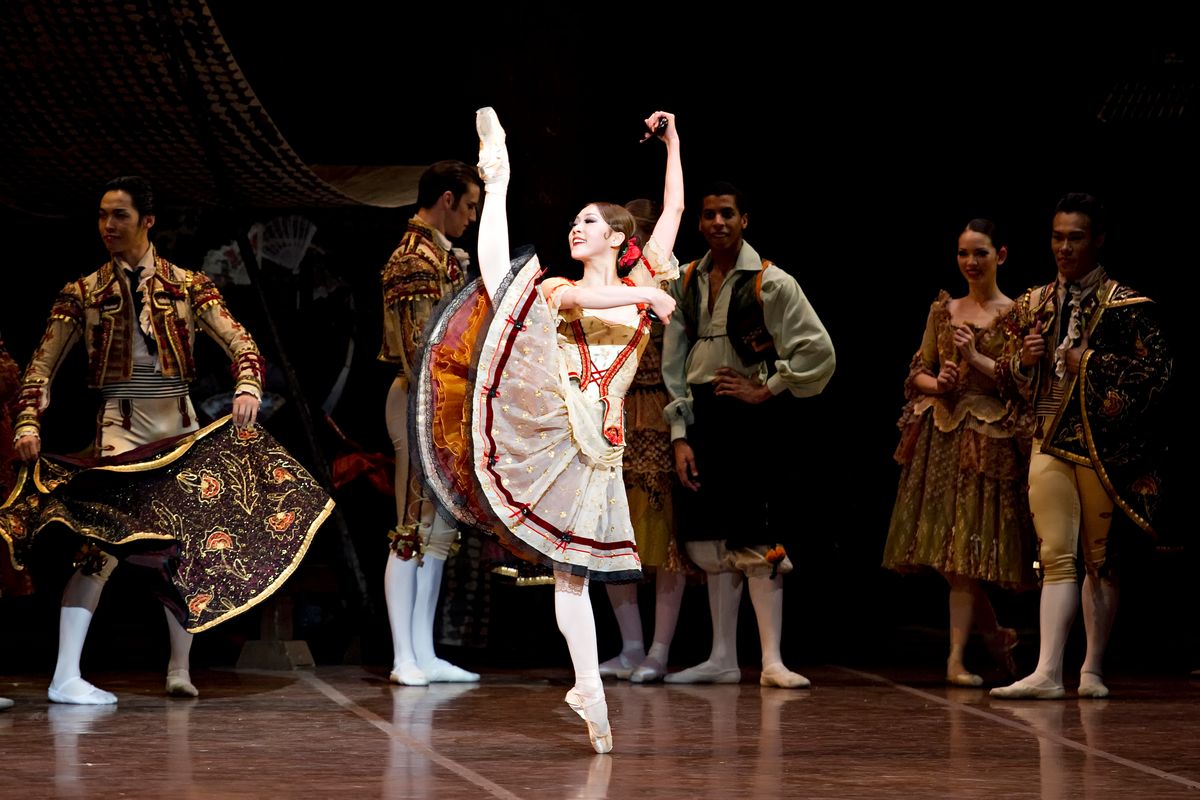Boston Ballet Principal Misa Kuranaga on Mastering Kitri's Spitfire Flair
This story originally appeared in the December 2014/January 2015 issue of Pointe.
Don Quixote‘s Kitri is one of the feistiest characters in classical ballet. Nowhere is that more clear than in Don Q‘s gregarious first act. After an exhausting series of dances with her equally temperamental boyfriend, Basilio, she tops everything off with a fast-paced, high-energy variation full of Spanish flavor. Boston Ballet principal Misa Kuranaga shares her advice on mastering the fiery solo.
1. Say Everything with Your Entrance
Set the tone before the dancing even begins. “You have to run onstage like a bullet, full of energy,” says Kuranaga, “but it still has to be nicely done.” Meanwhile, maintain a strong, Spanish-style épaulement—think flamenco dancer. “Keep your upstage shoulder up and twist your torso open.” In Boston Ballet’s version, choreographed by Rudolf Nureyev, Kitri uses castanets, clacking them feverishly as she runs in and throughout the variation. However, they can make your hands look awkward and unnatural. “You have to drop your wrists to make it look like you’re playing with them.”
2. It’s All in the Footwork
After an explosive développé and pirouette en dedans, Kitri travels upstage with sprightly runs on pointe. “I try to really overcross my front foot in front of the back foot, stepping diagonally back,” says Kuranaga. “Then the back leg has to meet it to cover space.”
3. Anticipate Positions

Gene Schiavone, Courtesy Boston Ballet
Midway through the variation, Kitri completes a series of huge sissonnes with the back leg in attitude, as if kicking the head. But try not to throw the moment away—use the assemblé beforehand to gather your energy into a solid fifth position plié. “For the sissonne, I think about finishing the position in the air, and then throw my head back—but not too hard,” says Kuranaga.
As you land, anticipate the quick piqué and fouetté attitude that comes next. “After the sissonne, I don’t shift my weight onto my front leg too much,” says Kuranaga. “I keep my weight in the middle so that I can shift it quickly to my left leg for the next step.”
4. Fifth, Fifth, Fifth
For the final passage of traveling pirouettes, try to finish each one in a clean fifth position (especially since you’re in effacé, which exposes how far apart your feet are). “I always aim for a perfect fifth—otherwise it looks really sloppy,” Kuranaga says. Use the spring up to and down from pointe to propel you forward.
5. Keep It Together
Between the accelerating music, the stage full of enthusiastic villagers and the lineup of matadors waving their capes, it’s easy to succumb to an adrenaline rush. “You have so much energy, but you always have to hit the positions,” says Kuranaga. “That’s the key to not looking messy and out of control.”





